Financing the EU’s energy and climate targets
Insights from central and eastern Europe on the next EU budget and related funding
Welcome to our Multimedia hub of content!
Our grid of resources showcases a variety of positive environmental solutions. Whether you are looking for impactful videos, informative infographics or examples of best practices, helpful content awaits here.
Videos
Webinars
Infographics
Podcasts
Glossary
Blogs, stories, publications
The ‘do no significant harm’ principle revisited – lessons from Poland for the next EU budget
Blog entry | 16 December, 2025The ‘do no significant harm’ (DNSH) principle is supposed to prevent EU funds from being invested in projects that harm the environment and undermine climate action. Though the principle is meant to increase awareness of the importance of environmental aspects in EU-funded projects, weak and incoherent implementation has hampered its effectiveness across the EU. Lessons learnt in Poland, the largest beneficiary of EU funds, can help improve the application of the ‘do no significant harm’ principle in the next EU long-term budget.
Read moreBankwatch’s position on the EU’s 2028–2034 Multiannual Financial Framework proposal
Publication | 12 December, 2025Our position paper analyses the European Commission’s proposal for the 2028–2034 Multiannual Financial Framework, highlighting how it falls short of addressing Europe’s urgent investment needs.
Read moreRace to the top: Reform and investment proposals for the Social Climate Plans
Publication | 31 October, 2025EU Member States are now finalising their national social climate plans in order to access the EUR 86.7 billion Social Climate Fund from 1 January 2026.
Read moreBackground

The EU aims to lead the fight against the climate crisis, and one of the key ways it supports Member States is through funding. However, for EU funds to be truly effective, they must be allocated and used strategically.
Mounting socio-political challenges – such as the war in Ukraine and energy insecurity – are making it increasingly difficult for citizens to take part in decisions that impact their right to a healthy environment.
Bankwatch and its member groups facilitate public participation in the planning and allocation of EU funds. We monitor EU spending in eight central and eastern European countries – Bulgaria, Czech Republic, Estonia, Hungary, Latvia, Poland, Romania, and Slovakia – ensuring these resources directly address the climate and energy crises while protecting people and the planet.
This web page provides an overview of the different types, purposes and benefits of EU funds, offering guidance for those interested in positively shaping climate-action investments.
EU budget
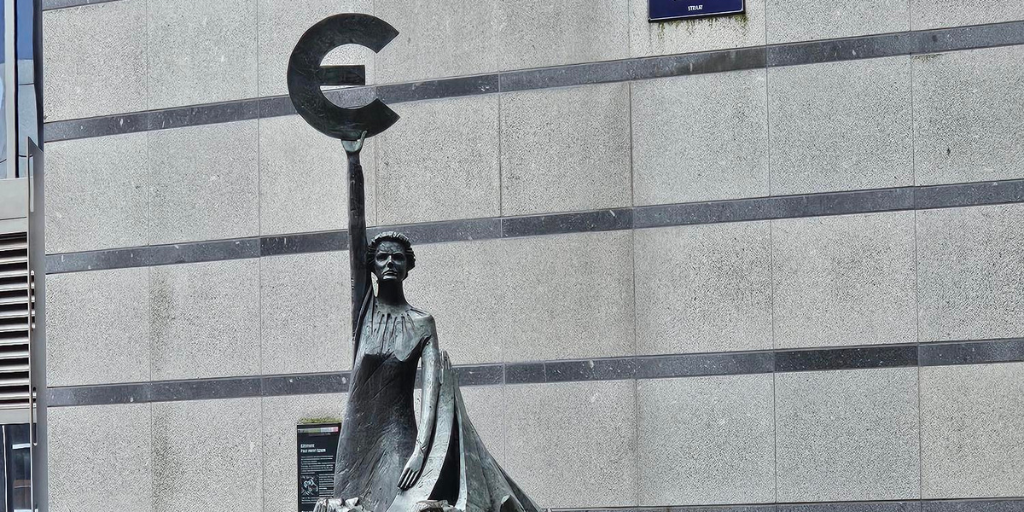
The EU’s long-term budget, also known as the Multiannual Financial Framework, is negotiated every seven years. The current budget, along with NextGenerationEU funds for the 2021–2027 period, amounts to just over EUR 2 trillion.
While this may seem like a large sum, the budget supports 450 million citizens in 27 countries across eight key priorities, ranging from economic development to security. Between 30 and 37 per cent of the budget is earmarked for combatting climate change.
Each EU Member State contributes to the budget based on its gross national income. However, the proportion that each country should contribute is often debated. Some are reluctant to provide more than one per cent of their gross national income, while others argue for a higher collective contribution.
Key funds
Cohesion policy funds – also known as the European Structural and Investment Funds – represent a major opportunity for Member States to invest in projects that align with EU priorities. These funds are particularly significant in some countries, where they account for a substantial share of public investment and play a key role in advancing sustainability goals.
For the 2021–2027 period, cohesion policy funds total EUR 392 billion. This funding is channelled through several funding instruments, including the European Regional Development Fund, the Cohesion Fund, and the Just Transition Fund. Designed to support the energy transformation in central and eastern Europe, each of these funds is subject to green investment thresholds, set at 30, 37, and 100 per cent, respectively.
The funds are allocated to operational programmes managed by national authorities, which can be thematic (the energy transition, for example) or regional. While implementation of these programmes was expected to begin in 2021, delays ensued as attention shifted to the Recovery and Resilience Facility response to the COVID-19 pandemic.
Bankwatch has published analyses of the 2021–2027 draft operational programmes in central and eastern European countries, offering recommendations to strengthen their climate and environmental impacts. We continue to closely monitor the progress of green investments and the mid-term review of cohesion policy funds.
The Recovery and Resilience Facility supports Member States in recovering from the COVID-19 pandemic while pursuing the green transition until 2026. Each Member State has submitted a national recovery and resilience plan, allocating at least 37 per cent of the funding to climate action so that no measures cause significant harm to the environment.
These plans outline how the funds will be invested, with disbursements contingent on meeting specific milestones set by the European Commission. The EU finances the Facility by borrowing from international markets, with repayments extending until 2058 to avoid placing immediate financial pressure on Member States. The Facility is also central to the REPowerEU plan, which addresses the socio-economic impacts of Russia’s invasion of Ukraine.
The Modernisation Fund is another tool designed to help central and eastern European Member States accelerate their green transition. Using revenues from the EU Emissions Trading System, the Modernisation Fund aims to upgrade energy systems by improving networks, increasing efficiency, deploying renewable sources, and supporting the just transition in carbon-dependent regions.
Along with its member groups, Bankwatch monitors the Fund with the aim of ensuring transparency and preventing harmful investments in outdated technologies such as gas-fuelled combined heat and power plants, waste incineration, and unsustainable biomass.
For more on our work on the Modernisation Fund, see here: Time to fix the Modernisation Fund: Stop climate money for dirty energy.
Database
Our comprehensive database tracks beneficial and harmful investments, measures, and support schemes across various EU funding instruments. Regularly updated, the database currently features over 150 examples from Italy, Bulgaria, the Czech Republic, Estonia, Hungary, Latvia, Poland, Romania and Slovakia, providing valuable insights for informed decision-making.
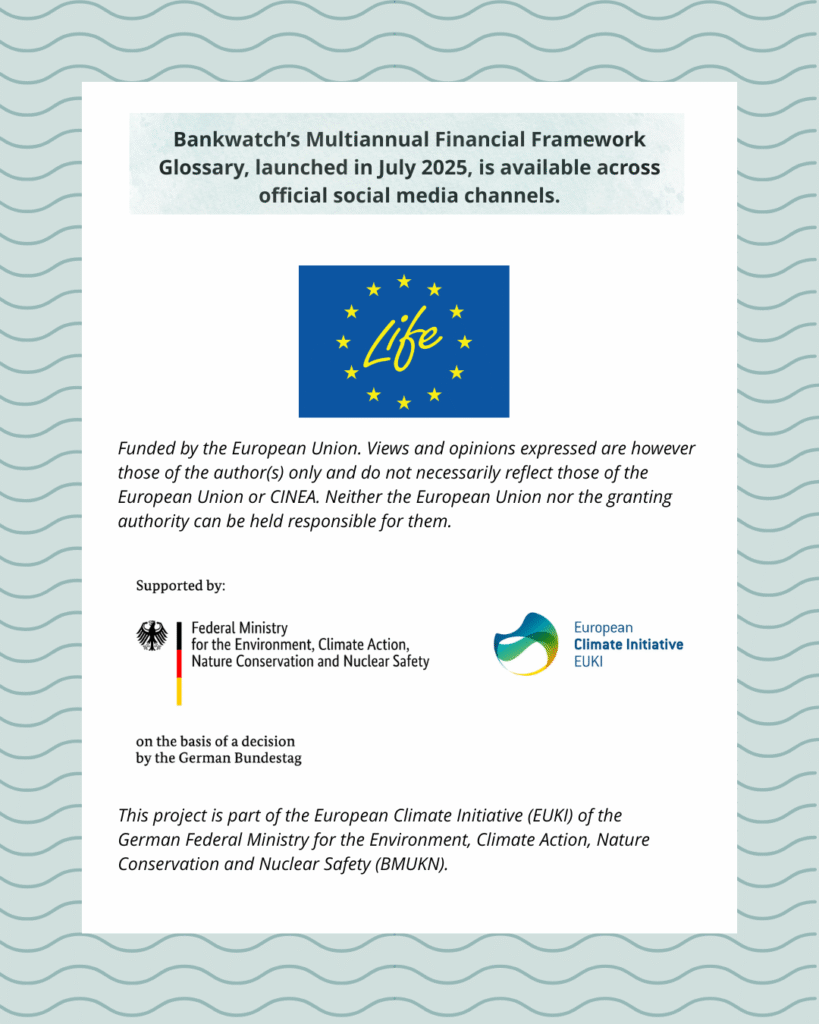
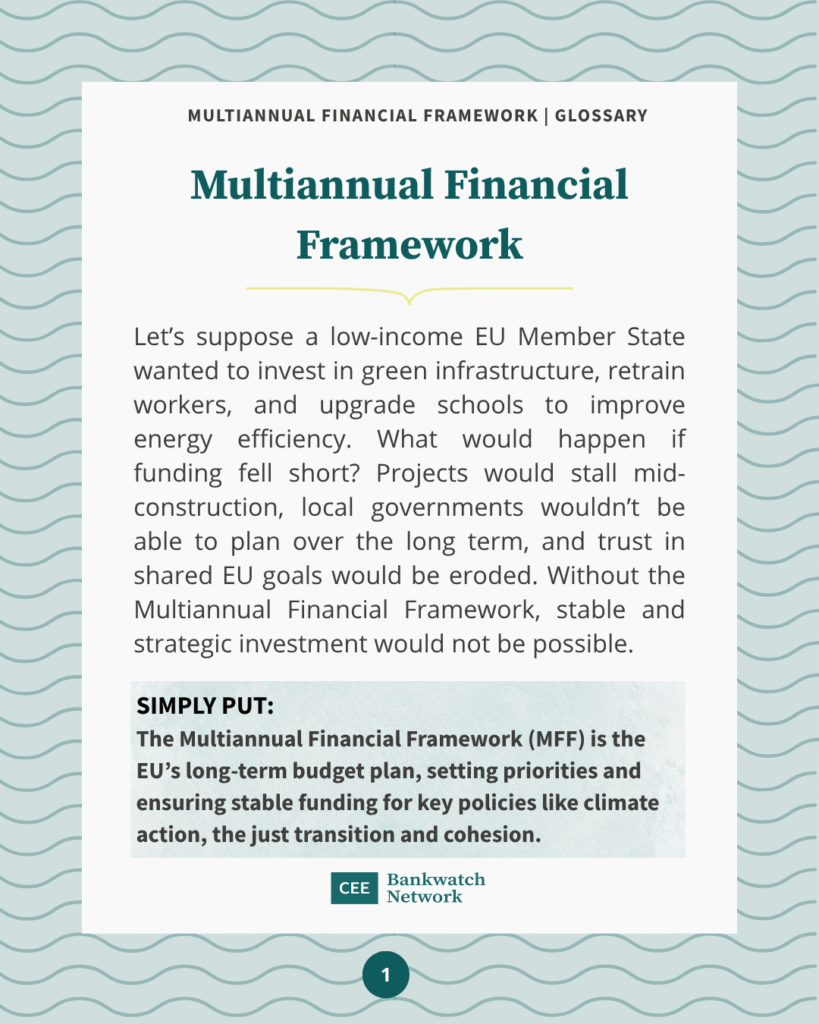
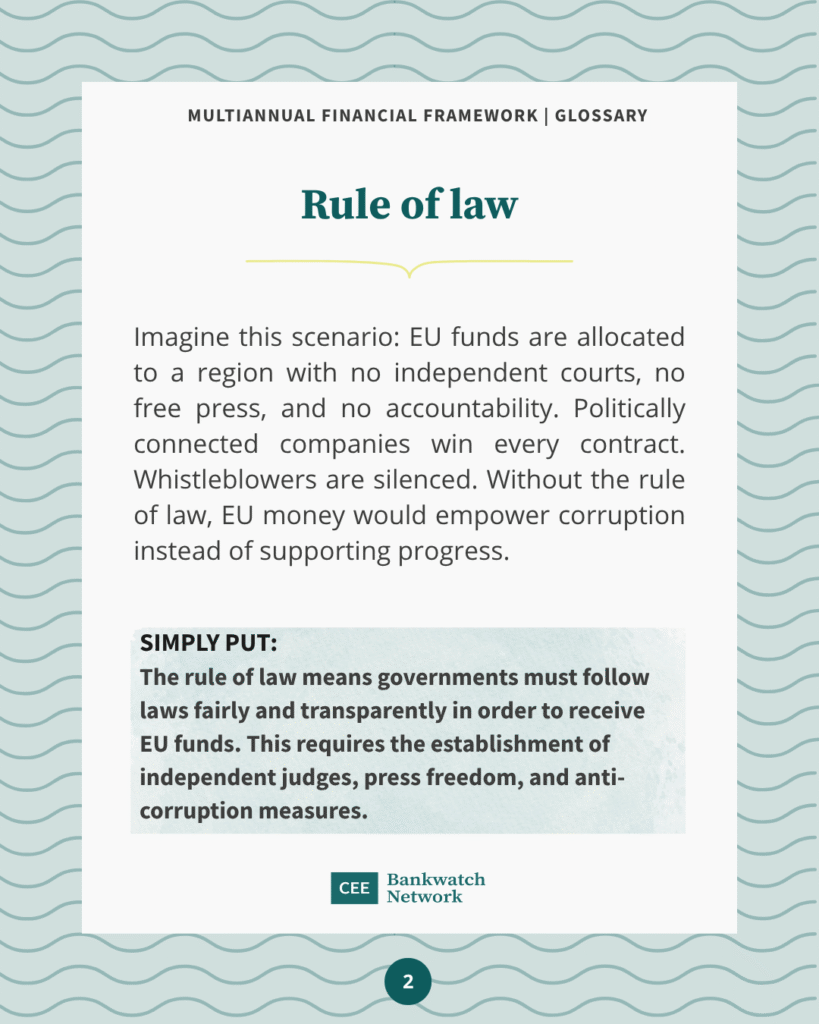
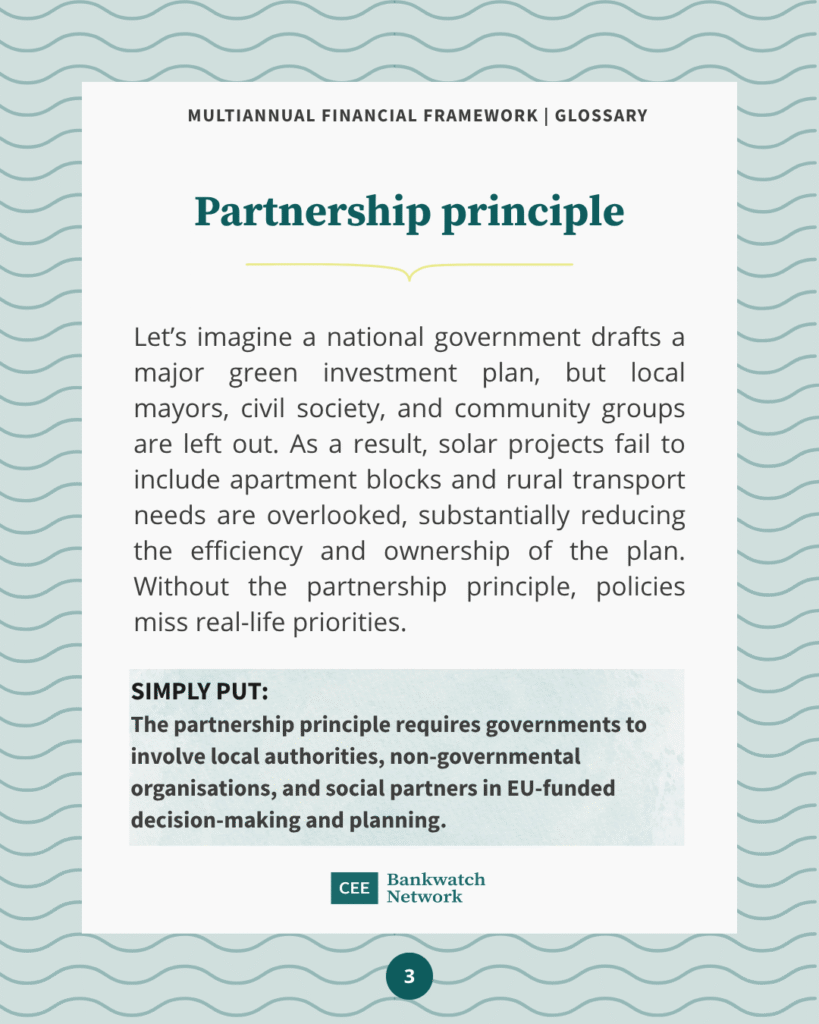
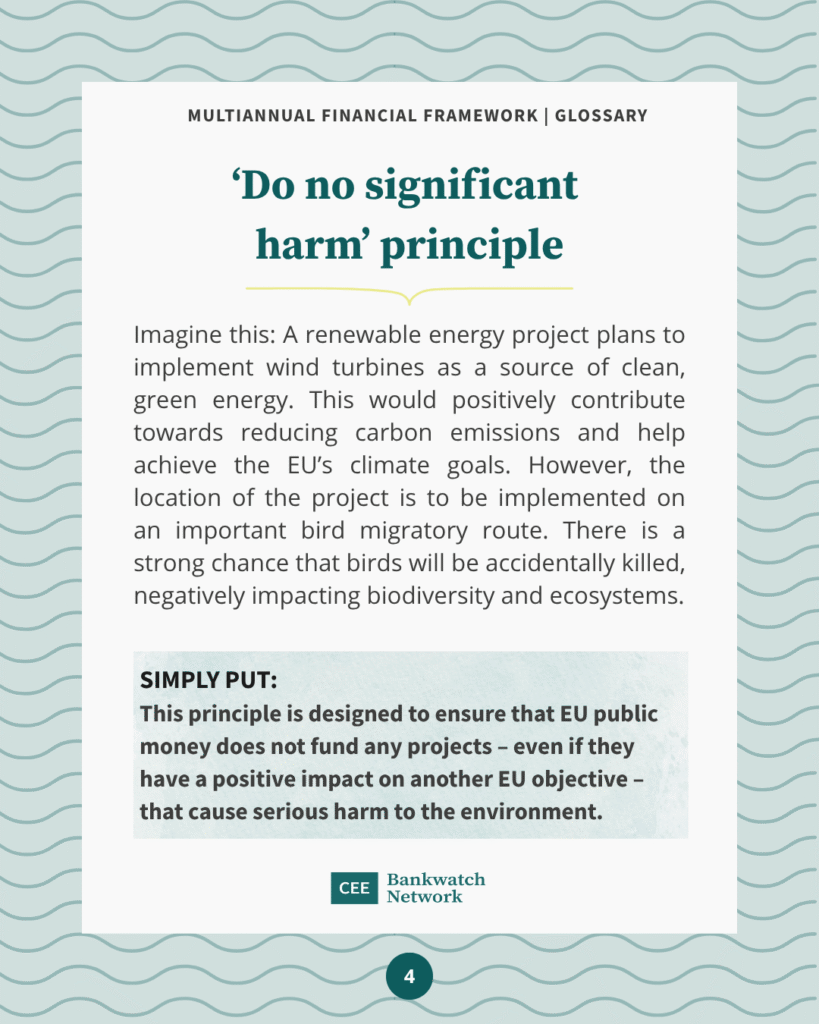
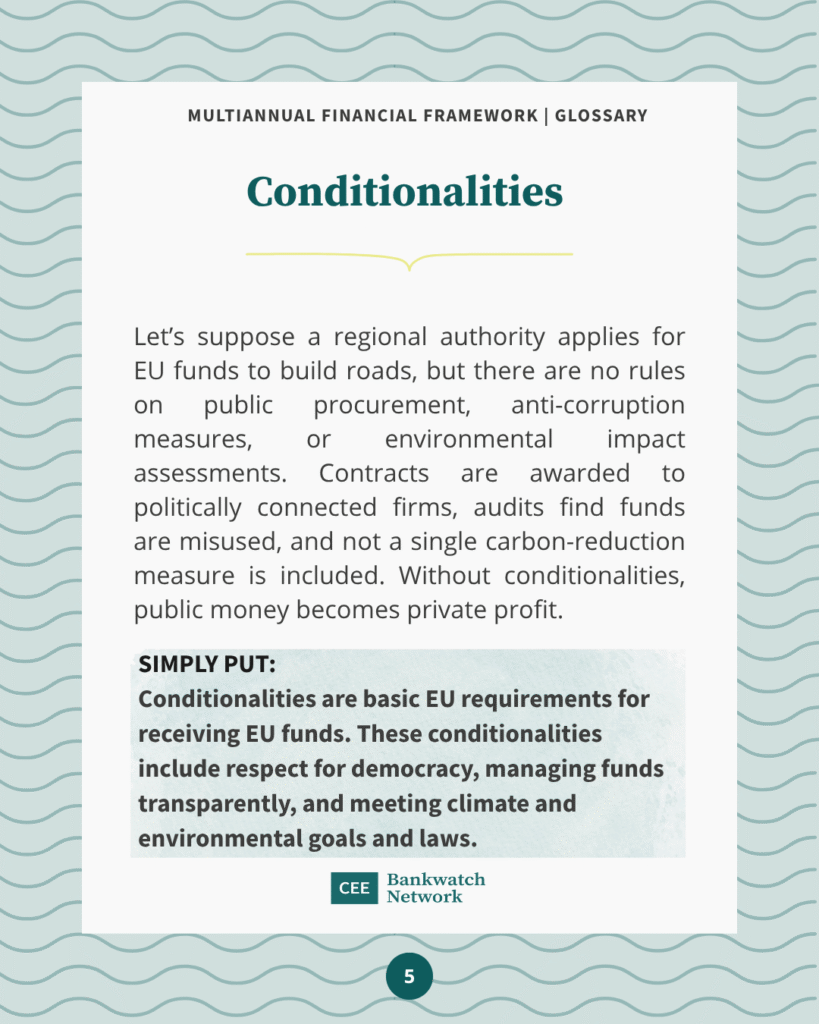
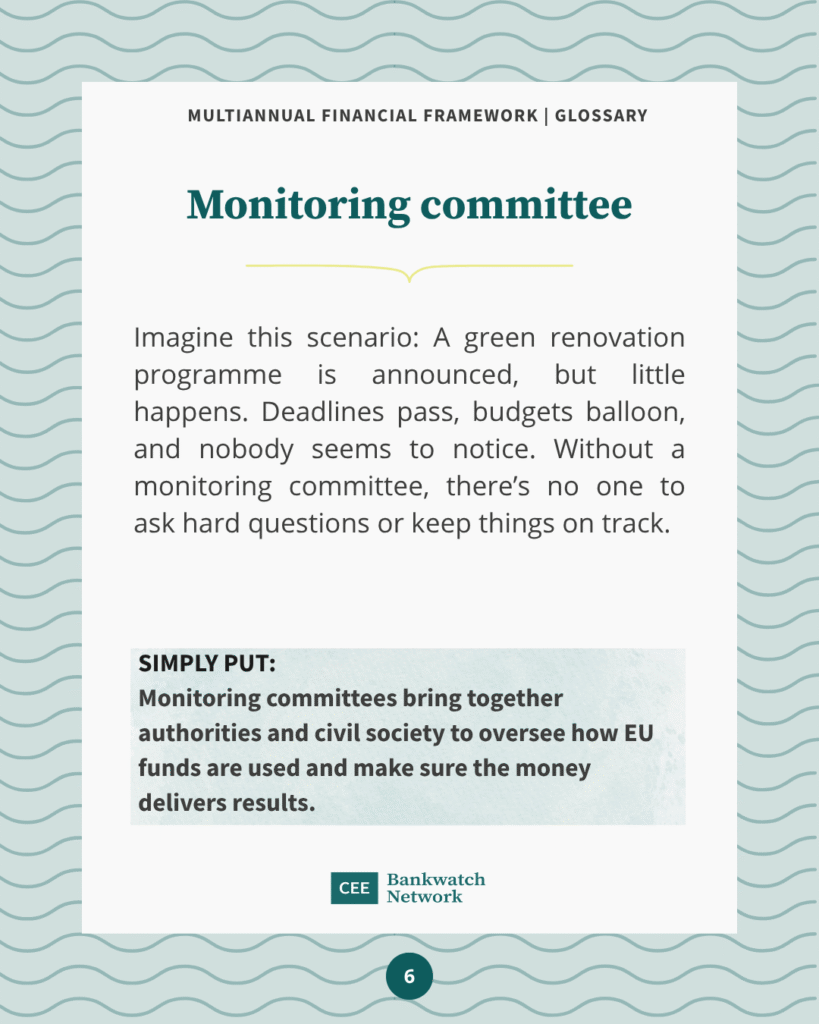
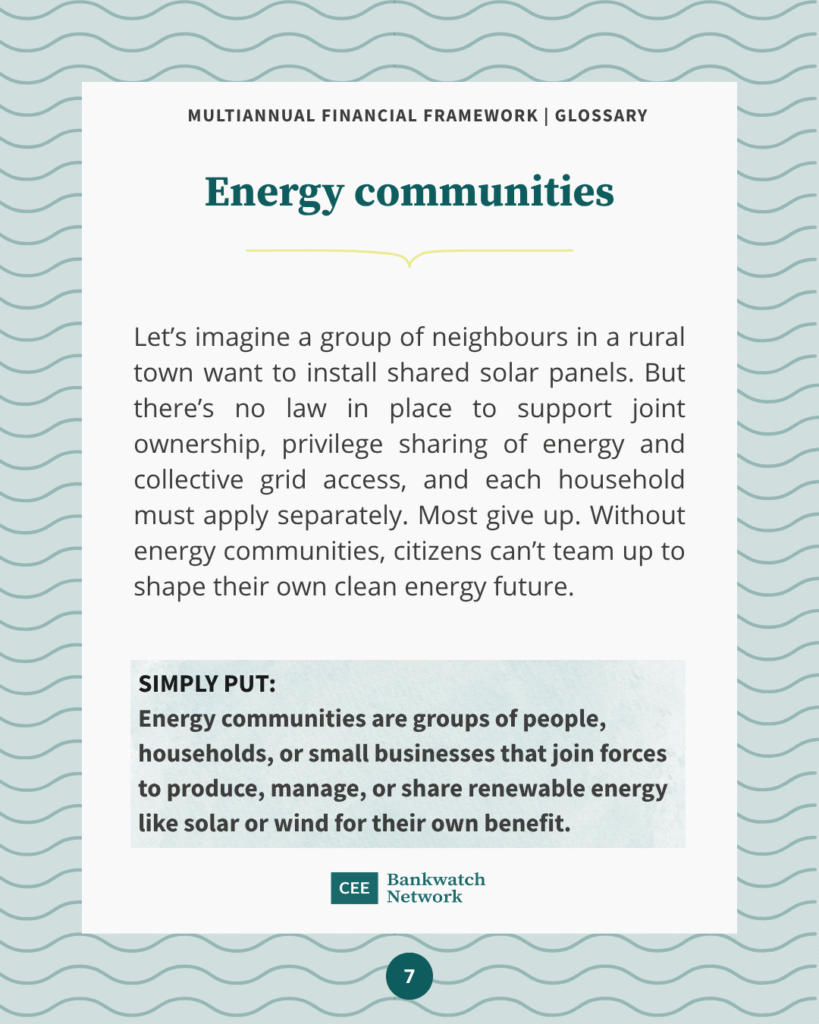
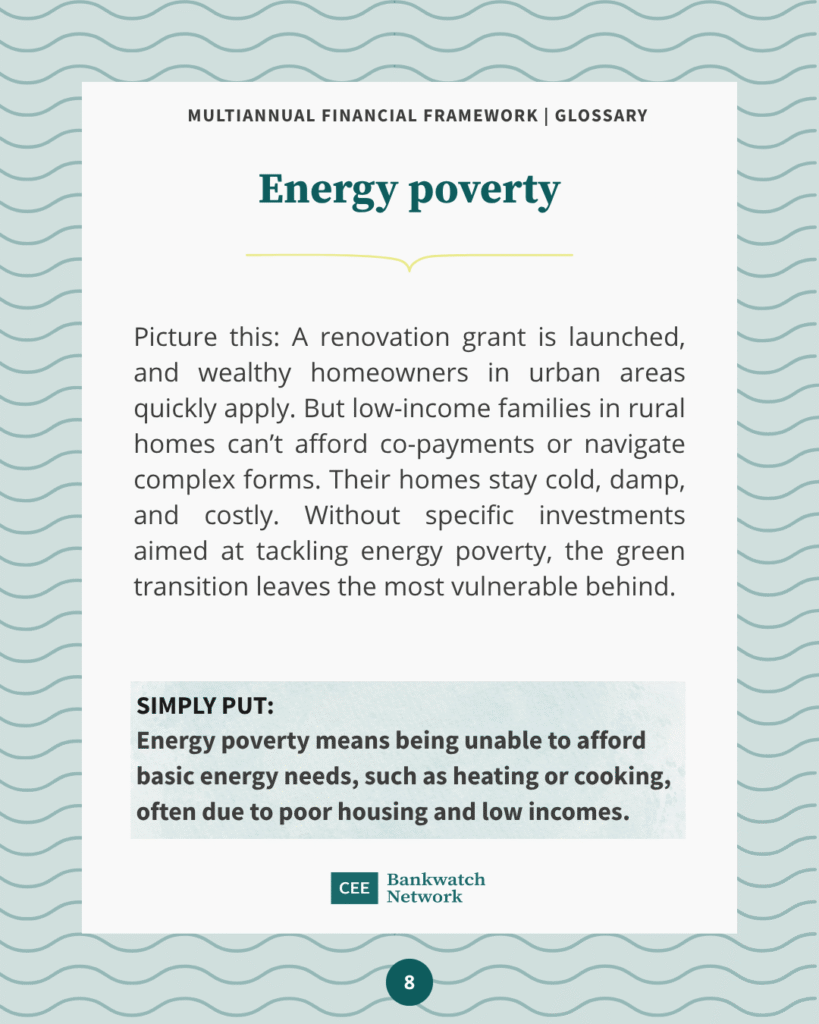
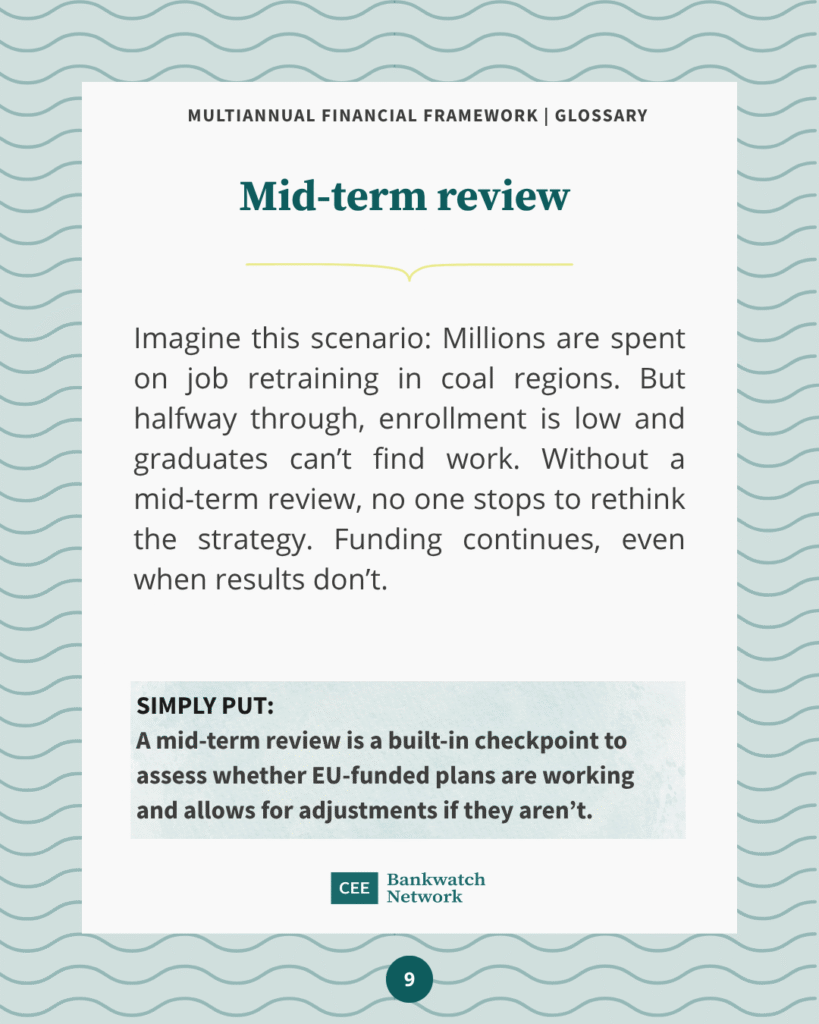
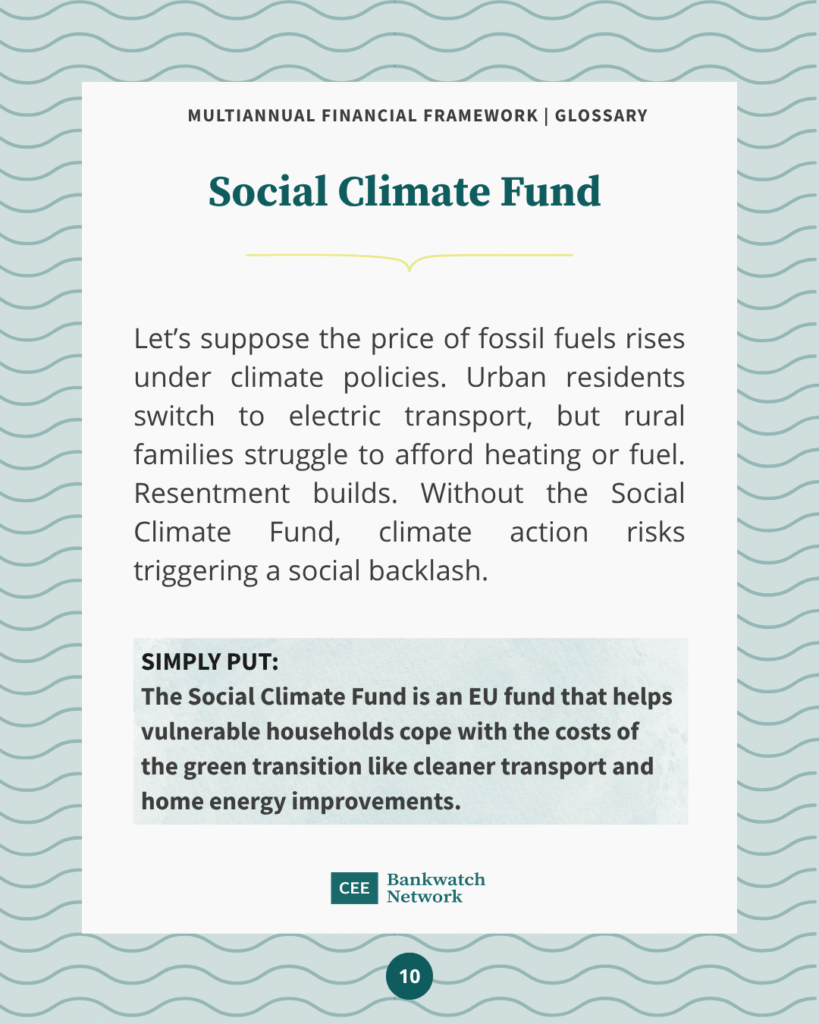
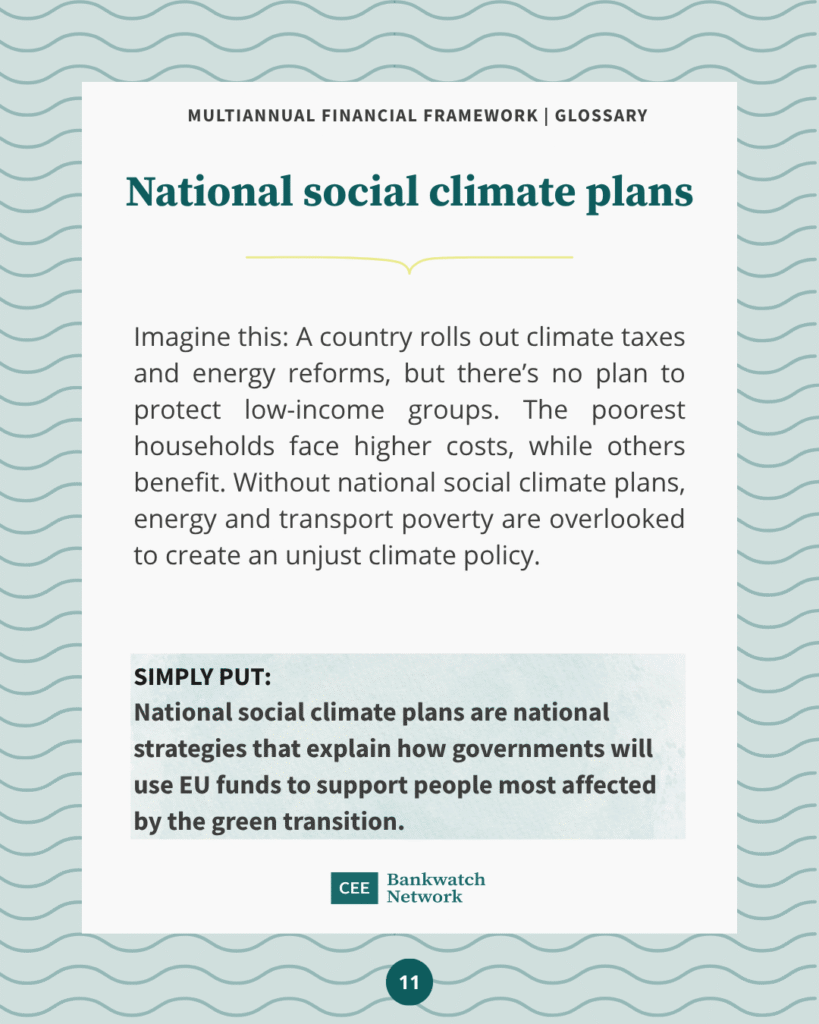
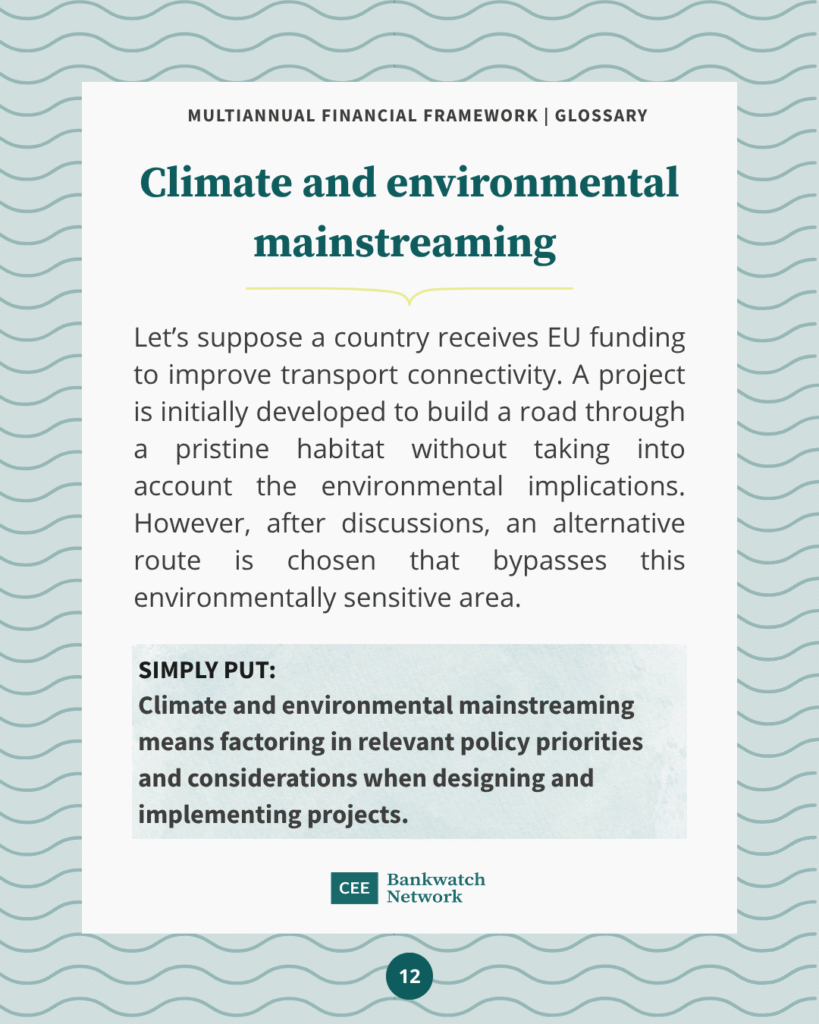
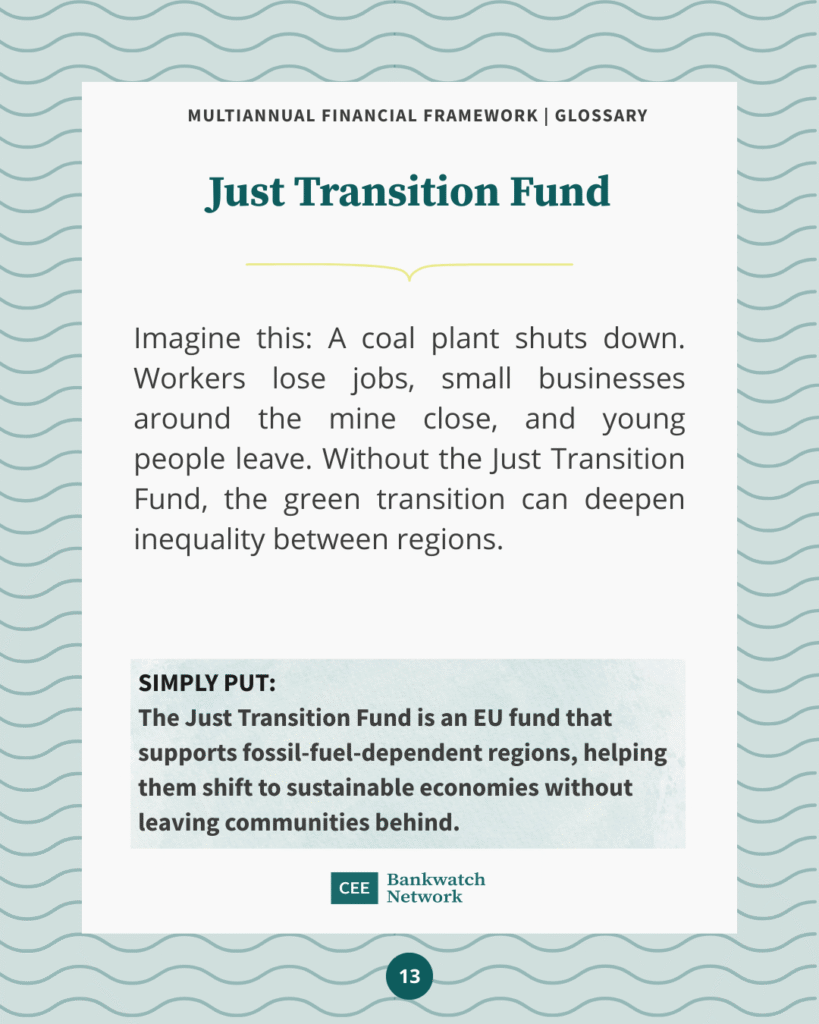
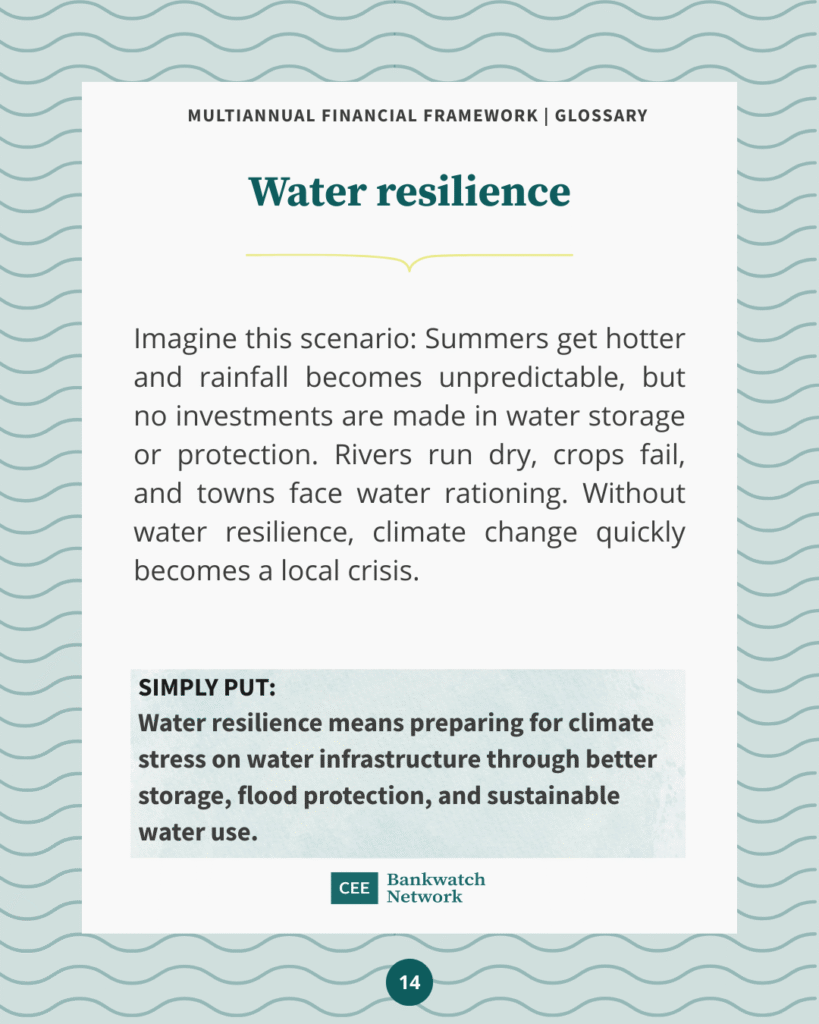
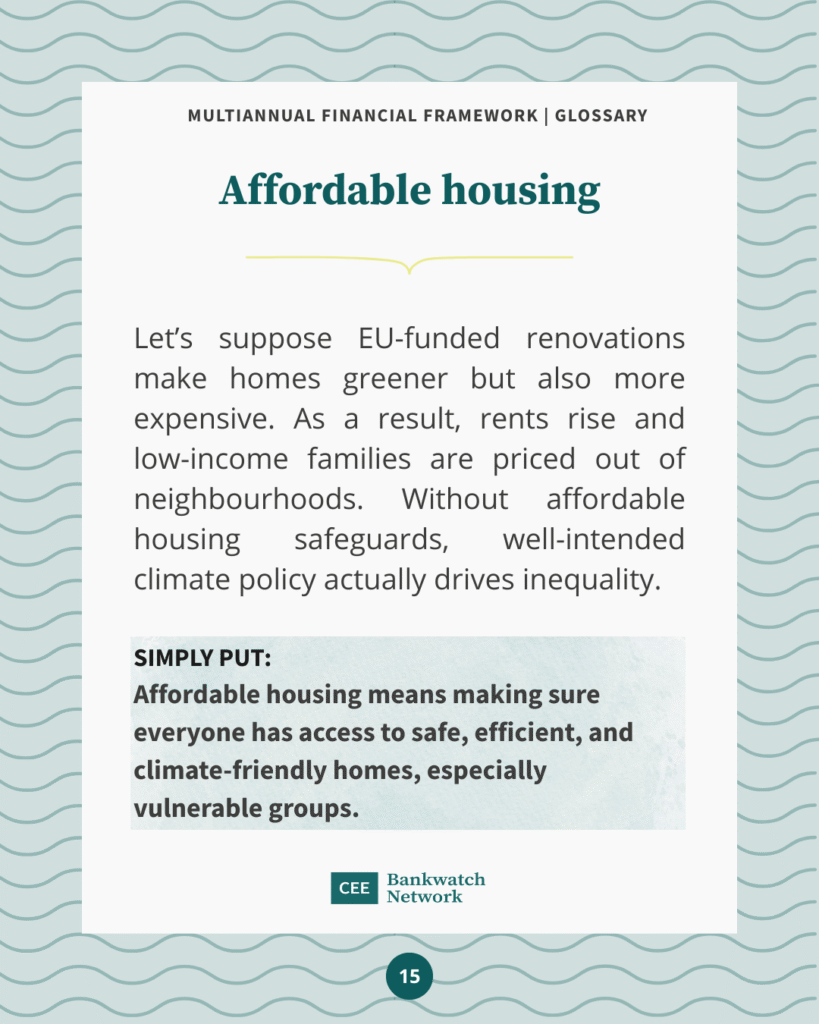
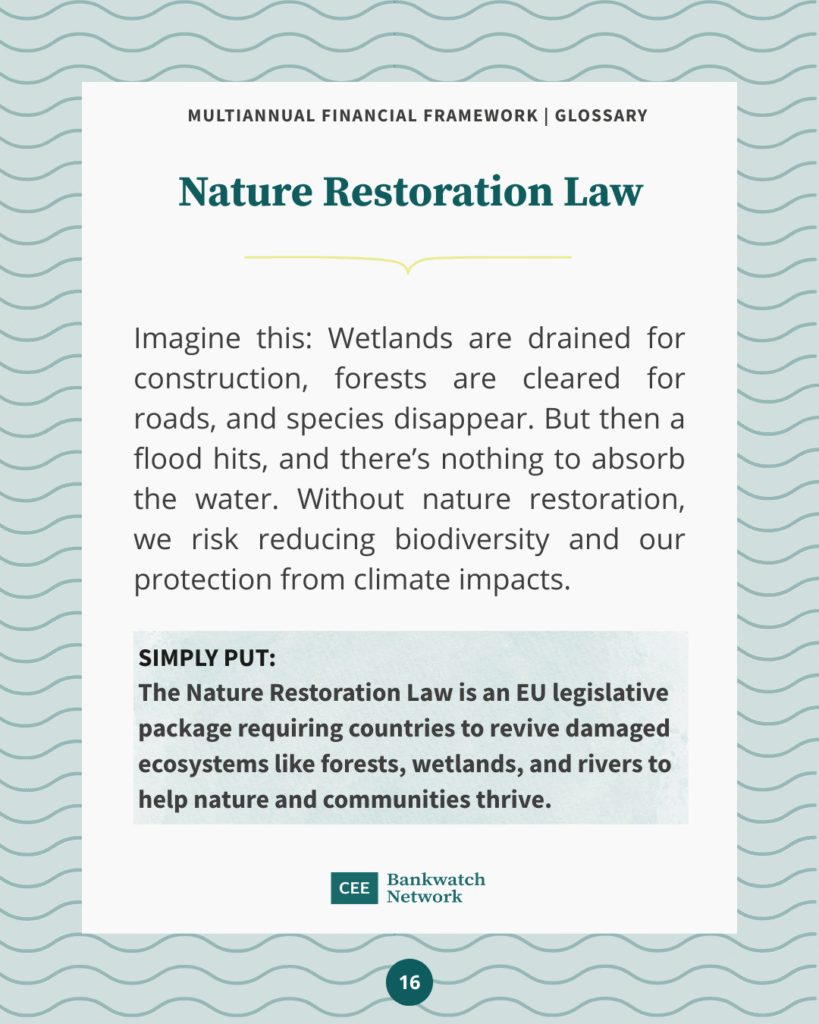

Social Climate Fund
One of the key initiatives of the Fit for 55 package – a key part of the European Green Deal – is the expansion of the Emissions Trading System to cover previously unregulated sectors like building and transport. The package also introduces the Social Climate Fund, designed to protect vulnerable groups and mitigate the effects of price increases on low-income households, transport users, and micro-businesses.
Although the EU has made tangible progress in advancing its climate goals with new legislation since 2020, a successful shift away from fossil fuels cannot be achieved without prioritising social equity. Failing to address the societal consequences of this transition risks deepening existing inequalities and leaving marginalised groups behind.